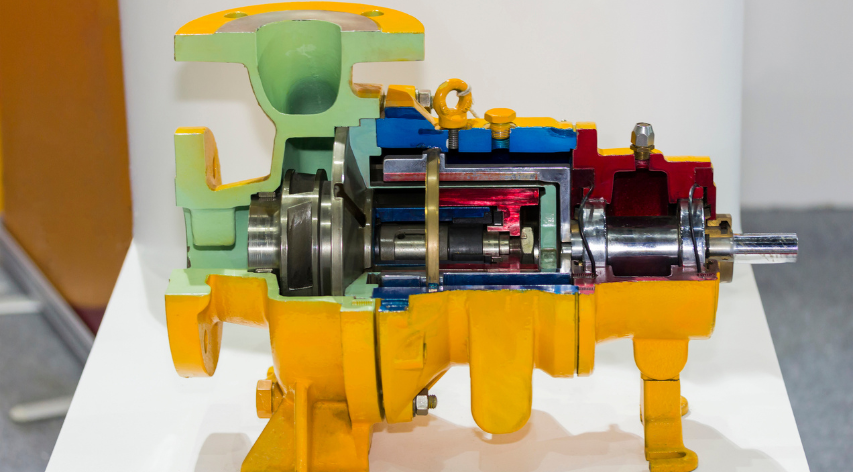How Becht Can Help Customers With Additive Manufacturing

With Ronald van Wolferen
For more than half a century, Becht has maintained a valued reputation for exceptional innovation, service and partnership solving engineering problems for the energy, process, and power industries.
Today, that reputation extends far beyond engineering! Becht has a full line up of services and resources where all your challenges and goals are achieved with innovative solutions by an outstanding team of experienced subject matter experts. Additive Manufacturing, aka 3D printing, is part of Becht’s portfolio.
Industries such as aerospace, automotive and medical have been applying Additive Manufacturing for many years and energy companies are now also coming on steam applying Additive Manufacturing. According to consulting firm McKinsey, 3D printing is now a US$14.7bn industry, with a 22% annual growth rate. AM revenues in the oil & gas market alone is expected to be worth US$2bn by 2027.

What is Additive Manufacturing and which materials can be used?
Additive Manufacturing is the construction of a three-dimensional object from a CAD model or a digital 3D model. In Additive Manufacturing, material (metals or advanced polymers) are added together, layer by layer so literally any shape can be produced.
Additive Manufacturing is not one technology, but a family of technologies to produce metal and polymer parts. A few examples are:
- Powder Bed Fusion to produce solid parts, using laser technology to induce fusion between powder metal particles one layer at a time.
- Wire Arc Additive Manufacturing (WAAM) works by melting metal wire using a robotic arm driven electric arc as the heat source to 3D print metal parts.
- Fused Filament Fabrication where filament is fed from a large spool through a moving, heated printer extruder head, and is deposited on the part.
- Binder Jetting for sand printing and casting where a mold will be 3D printed with sand and the metal part will be casted using the mold.
Material selection for Additive Manufacturing depends on the operating conditions of the part but many materials exist. The below table lists a few examples.

How can energy companies benefit from Additive Manufacturing?
In the energy sector a lot of work is going on applying the below use cases for Additive Manufacturing:
- Creation of parts for assets:
- Novel design supporting research and development. Given the fact that any shape can be 3D printed, new geometries can be designed to solve business issues (leaks, pressure drop, size, weight)
- Spare parts to overcome long lead time and poor part performance
- Obsoleted parts to offer parts that are not available anymore through reverse engineering and Additive Manufacturing
Some examples of part categories are pump impellers, valve internals, gaskets, equipment internals, pump houses, bearing houses and clamps.

-
- Creation of a digital warehouse, optimising the supply chain and move towards a 3D printing on demand environment.

The digital warehouse will be in full support of artificial intelligence based predictive assets, where future failure can be predicted, and timely part delivery can be ensured by the digital warehouse-3D printing on demand system.
- Net carbon footprint improvement
-
-
- Recycling metal into virgin powder and reuse the powder for Additive Manufacturing
- Repair parts versus buying new parts
- Creation of parts that are smaller or lighter but equally strong as the original
-
-

The above use cases are being worked in the energy sector and prevent plant outages, high warehouse or stocking costs and improve the environmental footprint. Financial savings are significant.
Certification of facilities and parts
Safety is key in the energy industry and new AM standards using existing and new knowledge to bring confidence in this technology have been developed. An auditing framework to qualify Additive Manufacturing facilities and parts exists and critical parts can safely be manufactured and put into operations.
More standards will come up and industry collaborations will ensure further uptake of Additive Manufacturing.
How can Becht support you in the Additive Manufacturing journey?
The energy market is starting to benefit from Additive Manufacturing and Becht understands the Additive Manufacturing landscape globally and can guide your company in this important journey.
Services Becht can offer are:
- Lunch & learn to get a deeper understanding of the potential of Additive Manufacturing in your company.
- Project management and strategy definition for AM-related projects.
- Additive Manufacturing Roadmap Development
- Physical warehouse review to identify the potential for a digital warehouse.
If you would like to contact the author or anyone at Becht regarding your Additive Manufacturing journey, please click below:






